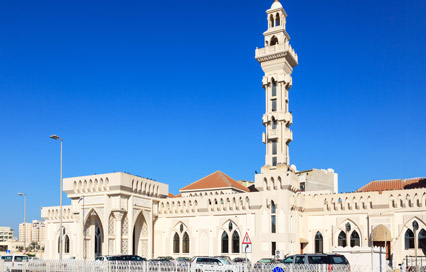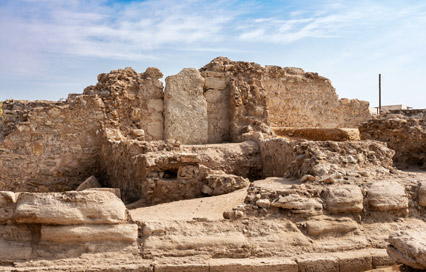Hawar Islands Day Trip Basics: Boats, Birdlife, and Quiet Bays
September 15, 2025
The Hawar Islands emerge from the Persian Gulf like scattered emeralds, offering one of the Middle East's most pristine natural experiences. The Hawar archipelago consists of around 35 islands, located about 45 minutes by boat from Bahrain’s mainland, provide sanctuary to endangered species and promise travelers authentic island exploration away from crowded tourist destinations. The archipelago's protected status as a Ramsar Wetland site ensures the wilderness experience remains unspoiled.

Hawar Islands
Getting to the Hawar Islands by Boat
Most tours to the Hawar Islands now depart from Durrat Al Bahrain marina, about 45 minutes south of Manama. Tours usually operate on weekends or by advance booking, with morning departures around 8:00 AM depending on weather conditions. The journey across the Gulf of Bahrain takes 45 minutes each way, offering excellent opportunities to spot dolphins and seabirds.
Several tour operators provide different service levels, from basic transportation to comprehensive packages including meals, guides, and snorkeling equipment. Bahrain Marine Sports Club offers the most established service, operating since the islands gained protected status in 1997. Their boats can accommodate 25-30 passengers and include safety equipment, life jackets, and basic refreshments.
Boat trip essentials:
- Departure times: 8:00 AM from Al-Dur jetty (check seasonal variations)
- Journey duration: 45 minutes each way across Gulf of Bahrain
- Group sizes: Typically 15-30 people per boat trip
- Weather dependency: Trips cancelled during rough seas or storms
Private boat charters offer more flexibility for photography enthusiasts and wildlife watchers, allowing customized timing and routes around the archipelago. These cost significantly more but provide intimate experiences impossible on group tours.

Hawar Islands - Wildlife and Birdlife Watching
Wildlife and Birdlife Watching Opportunities
The Hawar Islands support one of the world's largest breeding colonies of Socotra Cormorants, with over 100,000 birds nesting on the islands annually. These magnificent seabirds create spectacular aerial displays during feeding times, typically occurring in early morning and late afternoon when fish are most active near the surface.
Flamingo populations fluctuate seasonally, with peak numbers reaching several thousand birds during winter migration periods from November through March. The shallow lagoons between islands provide ideal feeding grounds where these elegant birds filter-feed on algae and small crustaceans. The contrast of pink flamingos against white sand beaches creates unforgettable photographic opportunities.
The islands' strategic location along major bird migration routes makes them a critical stopover for species traveling between Africa, Europe, and Asia. Over 90 bird species have been recorded, including ospreys, herons, terns, and various gull species that nest in different areas throughout the archipelago.
Notable wildlife experiences:
- Socotra Cormorants: Massive colonies, best viewed early morning
- Greater Flamingos: Peak numbers November-March in shallow lagoons
- Marine mammals: Dugongs and dolphins in surrounding waters
- Sea turtles: Green turtles nest on beaches during summer months
Small populations of Sand Gazelles are occasionally seen on the main island, while Arabian Oryx are mainly conserved in Bahrain’s mainland reserves such as Al Areen Wildlife Park.

Hawar Islands - environments for swimming, snorkeling
Exploring the Quiet Bay Areas
The protected nature of Hawar Islands means most bays remain completely undeveloped, offering pristine environments for swimming, snorkeling, and quiet contemplation. The main island features several sheltered coves with crystal-clear waters perfect for marine observation without disturbing sensitive wildlife habitats.
The northwestern bay on the main island provides the calmest conditions for swimming and snorkeling, with extensive seagrass beds that support dugong populations. These gentle marine mammals, related to manatees, occasionally surface near boats but require quiet observation to avoid disturbance. The seagrass meadows also serve as nursery areas for various fish species and provide feeding grounds for sea turtles.
Coral reefs surrounding the islands support diverse marine ecosystems despite the challenging desert environment. The reefs remain healthy due to limited human impact and careful management by Bahraini authorities. Snorkeling reveals colorful fish populations including parrotfish, angelfish, and various wrasse species adapted to Gulf waters.
Best quiet bay locations:
- Northwest cove: Calm waters, excellent for swimming and snorkeling
- Southern lagoons: Shallow areas perfect for wading and bird observation
- Eastern beaches: Pristine sand beaches with minimal human impact
- Sheltered inlets: Protected areas for kayaking and peaceful floating
These bays offer the rare experience of complete solitude in natural marine environments, something increasingly difficult to find in the heavily developed Gulf region.
Photography and Nature Documentation
Island exploration of Hawar provides exceptional photography opportunities for both wildlife and landscape images. The contrast between desert islands and surrounding turquoise waters creates dramatic compositions, especially during golden hour when warm light enhances the archipelago's natural beauty.
Wildlife photography requires patience and telephoto lenses to capture birds without disturbing nesting colonies. The Socotra Cormorants are particularly spectacular when photographed in flight during their synchronized feeding expeditions. Early morning light provides the best conditions for capturing these massive bird movements against clear skies.
Underwater photography reveals the hidden marine world surrounding the islands. The clear waters and diverse coral communities provide excellent subjects, though photographers should be aware of conservation restrictions and avoid touching or disturbing marine life.
Photography considerations:
- Equipment protection: Salt spray and sand require weatherproof gear
- Battery management: Bring extra batteries as charging options are limited
- Memory storage: Plan for large file sizes with extensive shooting opportunities
- Respect wildlife: Maintain safe distances from nesting birds and marine animals
Drone photography may be restricted due to the islands' protected status, so check current regulations with tour operators before bringing aerial equipment.
Conservation and Visitor Responsibilities
The Hawar Islands' designation as a Ramsar Wetland of International Importance reflects their critical role in regional ecosystem health. Visitor access is carefully controlled to balance tourism opportunities with conservation requirements. Only the main island allows general public access, while smaller islands remain strictly protected.
Conservation success stories include the recovery of Arabian Oryx populations and the stable growth of Socotra Cormorant colonies under protected management. These achievements demonstrate how careful tourism planning can support both wildlife protection and economic development.
Visitors play crucial roles in ongoing conservation efforts by following established guidelines, reporting wildlife observations, and supporting local conservation initiatives through tour fees and donations.
Visitor conservation guidelines:
- Stay on designated paths: Protect fragile desert vegetation and nesting areas
- No collecting: Leave shells, coral, and other natural items undisturbed
- Waste management: Carry out all trash, including food scraps and water bottles
- Wildlife observation: Maintain respectful distances from all animals
The islands' remoteness means any environmental damage takes much longer to heal than in more accessible locations.
Planning Your Hawar Islands Adventure
A successful Hawar Islands day trip requires advance planning due to limited boat schedules and weather dependency. Boat tours operate year-round but may be cancelled during rough weather conditions common during winter months. The best visiting season extends from October through April when temperatures are more comfortable and seas calmer.
Book tours several days in advance, especially during Bahrain's peak tourist season from November through March. Group tours generally range from 35–50 BHD per person, while private charters start around 250 BHD depending on boat size and season. Private charters start around 200 BHD for small groups but offer much more flexibility.
Trip planning essentials:
- Advance booking: Reserve spots 3-5 days ahead during peak season
- Weather monitoring: Check marine forecasts before departure day
- Sun protection: Bring hats, sunscreen, and protective clothing
- Hydration: Carry extra water as limited supplies available on islands
What should I bring for a Hawar Islands day trip?
Bring sun protection including hats and high-SPF sunscreen, plenty of water, snorkeling gear if you have it, waterproof camera housing, and comfortable walking shoes. Pack light snacks as food options are limited. Don't forget seasickness medication if you're sensitive to boat motion.
Are the Hawar Islands suitable for children?
Yes, the islands are generally safe for children over 5 years old. The boat journey is exciting for kids, and the wildlife viewing opportunities are educational. However, parents should supervise children carefully around water areas and ensure they follow conservation guidelines to protect nesting birds.
What's the best time of year to visit Hawar Islands for birdwatching?
Winter months from November through March offer the best birdwatching opportunities when migratory species join resident populations. Flamingo numbers peak during this period, and weather conditions are more comfortable for extended outdoor observation. Early morning departures provide optimal wildlife activity.
The Hawar Islands offer an unparalleled combination of pristine wilderness, incredible wildlife, and peaceful isolation just a short boat ride from Bahrain's modern cities. This protected archipelago demonstrates how thoughtful conservation can preserve natural treasures for future generations to discover and appreciate.
Discover Bahrain's Natural Paradise with GVC
Planning your Hawar Islands adventure and exploring Bahrain's remarkable wildlife sanctuary requires proper travel documentation to ensure seamless access to this protected archipelago and its pristine ecosystems. These extraordinary desert islands, with their world-class birdwatching opportunities and crystal-clear waters, represent one of the Middle East's most significant conservation success stories.
GVC provides expert visa services that streamline your Bahraini travel requirements, allowing you to focus on discovering unique experiences like witnessing massive Socotra Cormorant colonies and snorkeling in untouched coral reefs. Whether planning an extended nature-focused exploration of Bahrain's protected areas or combining island adventures with cultural attractions throughout the kingdom, professional visa support ensures all documentation requirements are handled efficiently and correctly.
Understanding Bahrain's visa regulations becomes straightforward with GVC's comprehensive guidance and transparent pricing structure, providing confidence throughout your application process. The convenience of secure online processing simplifies your entire visa experience, ensuring peace of mind as your Gulf adventure approaches. With pristine marine environments, rare wildlife encounters, and peaceful desert islands waiting to be explored, expert visa services let you concentrate on planning your perfect Bahraini nature experience while professionals handle your travel documentation seamlessly.
Related Articles:
- Best Places To Visit In Bahrain For First Time Travelers
- 10 Things To Do In Bahrain For First Time Comers
- Top Things To Do In Bahrain Travel Guide
- Bahrain Tourist Attractions The Ultimate Guide To Exploring The Pearl Of The Gulf
- Bahrain Travel Guide Everything You Need To Know Before You Go
- Bahrain Sightseeing Places Top Destinations That You Should Visit
- Visit Bahrain A Gem Of The Arabian Gulf
Tags




